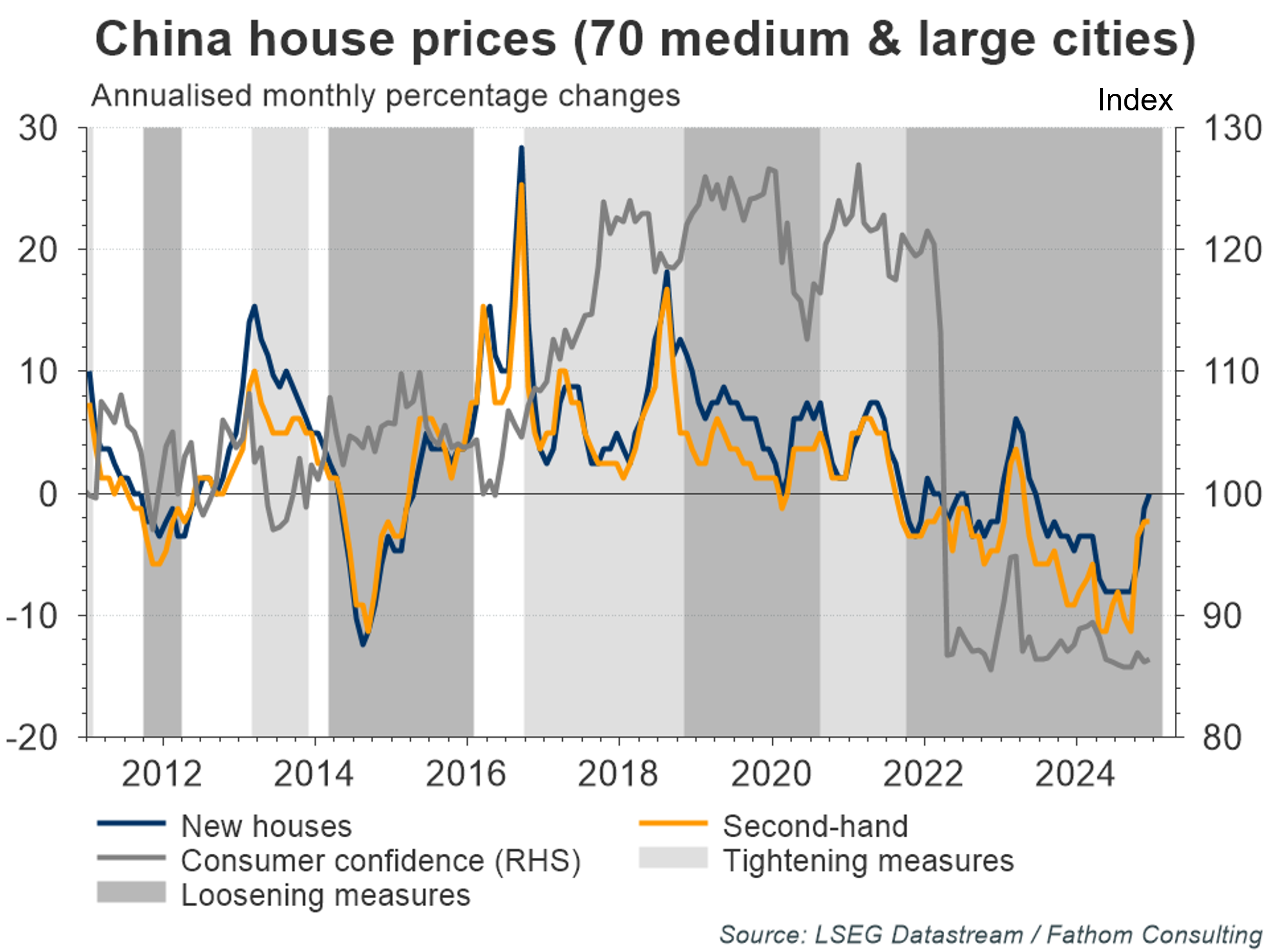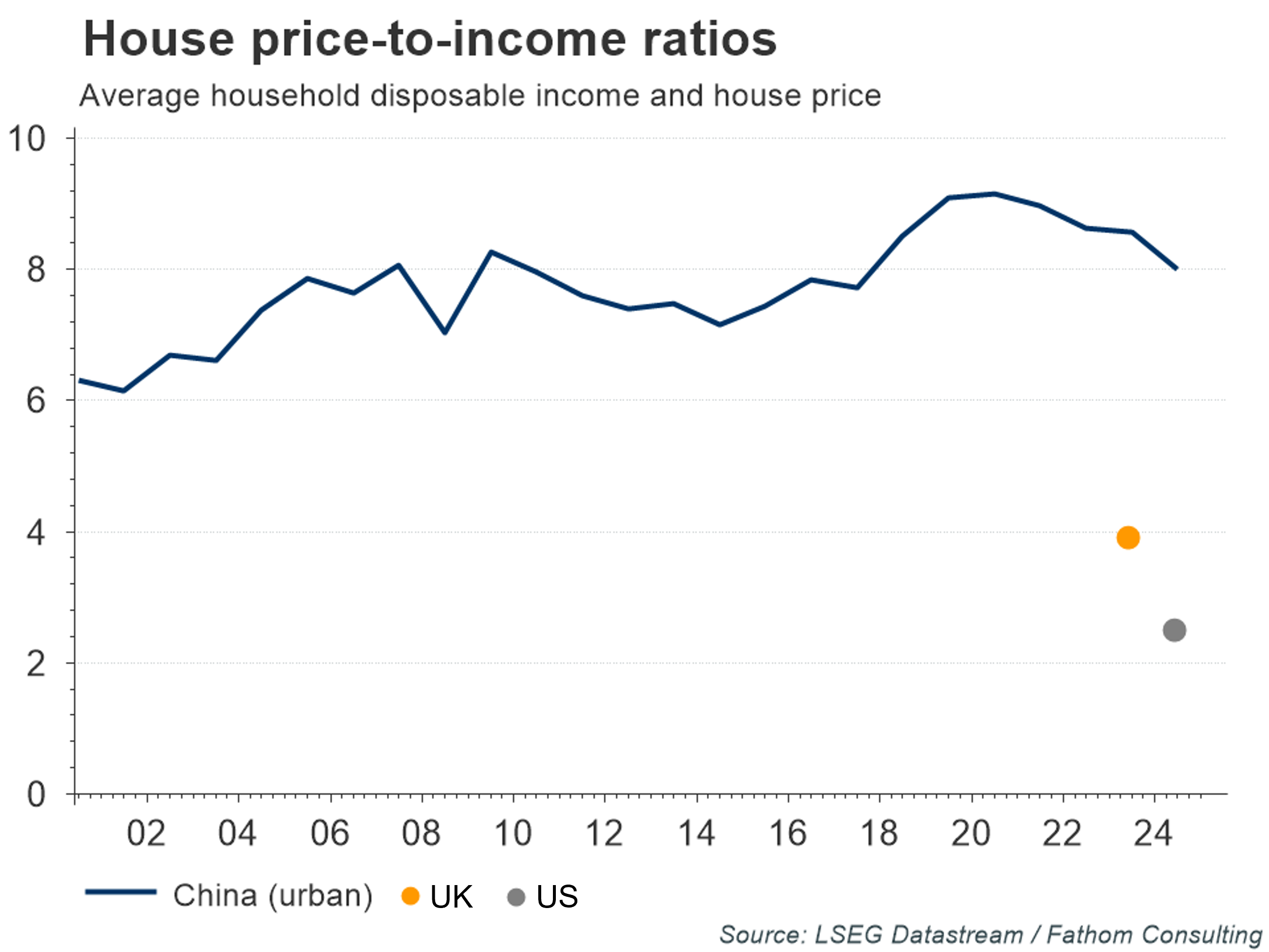An ageing population, declining bang-for-investment-buck and a US determined to stymie China’s rise has Asia’s greatest powerhouse facing what looks to be a long decline. Since the global financial crisis, real estate construction and investment has been the Chinese government’s favoured economic fallback. This has allowed them to paper over cracks in local government finances, keeping employment high, albeit unproductive, and therefore limiting the risk of social unrest while supporting economic activity.

Refresh this chart in your browser | Edit the chart in Datastream
However, with investment having far outpaced demand, this has led to a buildup of massive imbalances in the housing market and Chinese authorities find themselves in a difficult juggling act of trying to reduce imbalances while avoiding a complete real estate collapse. Xi’s ‘three red lines’ in 2021 showed just how shaky the situation was and started the current housing malaise, which saw real estate giants such as Evergrande default on their commitments, consumer confidence tank, and Chinese house prices fall throughout much of 2023 and 2024, in spite of government efforts to support them through the use of measures such as easing home-buying restrictions.

Refresh this chart in your browser | Edit the chart in Datastream
Want more charts and analysis? Access a pre-built library of charts built by Fathom Consulting via Datastream Chartbook in LSEG Workspace.
Lower house prices have made Chinese housing marginally more affordable in 2024, as shown in Fathom’s newly updated China housing market indicators, but prices would have to drop far more drastically for China’s total housing stock to clear. With a full-scale housing collapse an unenviable prospect, Chinese authorities are attempting to drip-feed the excess supply into the market, by amongst other things extending construction times, which are currently at around nine years.

Refresh this chart in your browser | Edit the chart in Datastream
At the current rate it will take about seven years to sell the total housing stock, however official numbers do not capture the true picture. For while the total square meterage under construction has been shrinking, ‘paused’ housing, which is not reported in the official statistics, has been increasing steadily. Some of this hidden stock has likely been demolished before completion, however it still means that the true depth of China’s housing market woes is substantially more than at first glance. Couple this with China’s demographic decline, and therefore an increase in vacant homes in the future, and it looks like China’s housing market problems are here to stay.

Refresh this chart in your browser | Edit the chart in Datastream
The views expressed in this article are the views of the author, not necessarily those of LSEG.
______________________________________________________________________________________
LSEG Datastream
Financial time series database which allows you to identify and examine trends, generate and test ideas and develop viewpoints on the market.
LSEG offers the world’s most comprehensive historical database for numerical macroeconomic and cross-asset financial data which started in the 1950s and has grown into an indispensable resource for financial professionals. Find out more.





